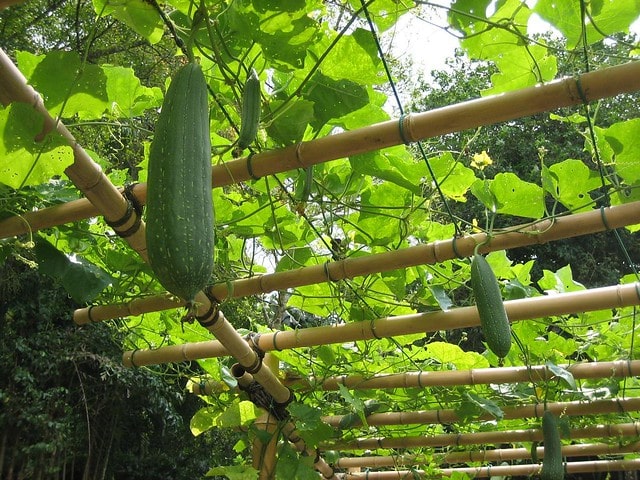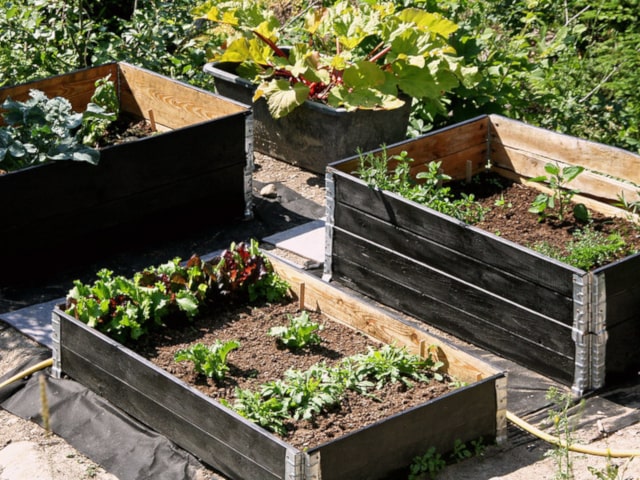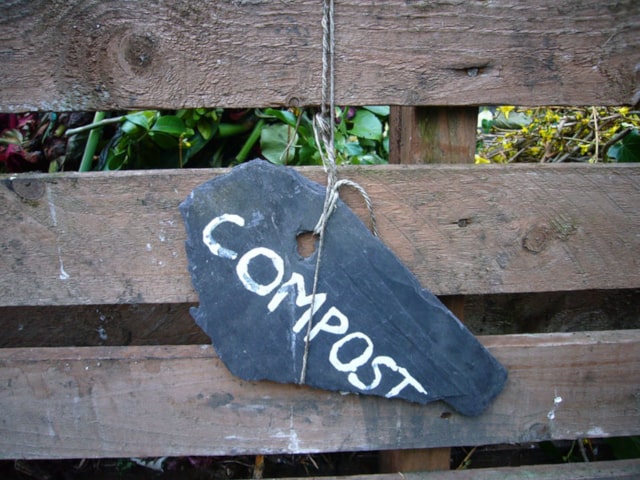
Once you have your box ready, it's time to add the soil. There is a great way to make a good potting mix that will benefit your plants: all you need to do is to add the right ingredients. Generally speaking, a combination of compost, peat moss and vermiculate works great as square foot garden soil. This mix is particularly great when you are building your garden on top of cement, lawn or a table.
Choosing the Materials for the Mix
In case you wish to build the garden in your backyard soil, remember to add 6" compost to it. Mix it well using a shovel or a rototiller. It will create the much-needed drainage and it will save you some money because in this case, you won't need to buy peat moss and vermiculate.
On the other hand, compost is crucial. Both sandy and clay soils can benefit from compost and it's usually sold for a very cheap price, especially in cities who recycle yard waste. Also, it's important to remember that each time you remove a plant, you should add more compost to the square and mix as best as you can.
One thing you should also keep in mind is that peat moss comes from fragile ecosystems, meaning, the ones that can't be re-established easily. There are plants that need peat moss to thrive and the others where peat moss is not crucial for their survival. Also, some plants can't be grown in peat moss, or at least not in peat moss alone.
When it comes to peat bogs, they are a type of habitat and they account for about 2% of the world's surface. This is really a small percentage. This is another reason why you might not want to use peat moss, at least not in great quantities ‐ it is scarce and needed in certain ecosystems. If you really want to use some peat moss, use it only as a onetime thing when you start each box. After that box is established, don't add more peat moss to it (the same can be said about vermiculite ‐ no need to add more once the box is established).
A potential substitute to peat moss might be coir, especially coconut coir. Keep in mind, however, that coir is more expensive than peat. It's made from the fiber of the husks extracted from coconut, and can be commonly found in products such as fish mats, string mats or floor mats. You may use it if you like and if you don't mind the price. One thing you need to remember is that it's usually shipped long distance, which has an impact on the environment.
Vermiculite is another thing you may want to add to the mix. This substance is sometimes used by owners of tarantulas and reptiles as part of the animal bedding. Vermiculite is an excellent medium for planting seeds, so you should definitely consider it.
Vermiculite originates from a mineral called mica. This mineral is heated to very high temperatures, which causes it to expand. It transforms into this cool, golden substance known for its ability to hold water. When choosing vermiculite to use in your garden, make sure that the bag has a label "asbestos free". Most of today vermiculates are asbestos free, but it was a problem with some vermiculate mines in the 90s, where vermiculate was contaminated with asbestos. Today, products are tested for safety and labeled as asbestos free so you know you are buying a safe vermiculite.
Preparing the Mix
Once you have your chosen mix ready, it's time to use it in your garden. The best thing to do it is to multiply your square foot garden 4'x4; by the depth. This will give you the cubic yards of soil needed for the whole garden.
For example, if the depth of your garden is 6" (about half of a foot) multiply it by 0.5 to get a total area of 8 cubic feet. After this, divide by three materials you have and you will get the final number, about 2.7 cubic feet of compost, vermiculite and peat moss. This is how much of the materials you need for the garden.
Keep in mind that some materials may come quarts, and peat moss is often sold in bales. It means there is a lot of more there loose than it may seem at the first glance. This is why doing some math will help you a lot to determine how much materials you need.
However, if you are not a math enthusiast, fear not. These measurements don't have to be precise; they are there only to help you and make your calculations correct. In case you don't want to bother with the math then go with an estimate, though in this case you might end up losing some of the materials.
One advice: if you want to build a taller square garden (for example, 2 feet deep instead of just 0.5 feet deep), you will have to amend only the top 6" (about 0.5 feet) with the soil mix, which means you will need the same amount of materials. You may fill the bottom with just compost or even sand.
Use large tarp to mix the materials. As you add one by one material to the tarp, don't forget to spray it with water to prevent dust. It's best to wear a dust mask and goggles while doing this, just as a precaution, because small particles from the materials are known to irritate eyes and nose.
Once the mix is ready you can add it to your garden box.
Building a Grid
The next step is to establish a grid in your garden. A true square foot garden will usually operate as a grid. A grid can be easily built using yardsticks, strings, twine, wood or venetian blind slats. Almost any material from a hardware store would do.
You will need a total of six 4' pieces of your chosen material. If you want to use twine, don't forget to hammer the nails one foot apart along the outside of the box and lave about 1/4 inch of the nail sticking out. After this, run the twine around them. If you want to use wood or plastic blinds, simply screw or nail the pieces together. Think about it as building a huge tic-tac-toe game!
The main goal of the grid is to make 16 square foot compartments for your plants. The number of plants you want to put into each square will depend on the crops you wish to grow and the way they need to be grown.
It's probably best to categorize your plants by size and divide them into several groups: small, medium, large and extra-large. Here is an estimate on how much space your chosen plants will take, depending on their size:
- Small Plants: You can put about 16 per square. Examples: carrots, radishes, beets, chives.
- Medium Plants: You can put about 8 per square. Examples: spinach, bush beans, sugar snap peas.
- Large Plants: You can put about 4 per square. Examples: strawberries, corn, chard, parsley.
- Extra-Large Plants: You can put 1 per square. Examples: cabbage, eggplants, broccoli, okra, pepper, cilantro, mint, oregano.
It's up to you how you want to organize your garden and what you want to grow. You may mix different plants inside the grid. You will have 16 squares to grow your plants, so, for example, you may use one to grow 1 tomato, the other one to grow 4 corn plants, then the third one to grow 8 spinach plants, the fourth one 9 bush beans, the fifth one 1 eggplants, sixth to grow 4 marigold plants, seventh to grow 1 pepper plant, and so on.
You have a lot of freedom in organizing your grid and deciding what to grow, just keep some things in mind:
Always account for extra space for certain crops. Some crops can take several squares, for example, bush tomatoes. This is something you need to keep in mind.
Plant tall plants such as corn or okra along the north side of the garden. This will prevent them to cast shade on the other plants.
Make a trellis for vining and climbing plants such as tomatoes, melons, cucumbers and squash. You may make a trellis out of PVC or a metal pipe. Simply tie a string trellis over it, and if you want some stronger support, use twine or wire.
Photo credit: baigne par le soleil




0 Comments